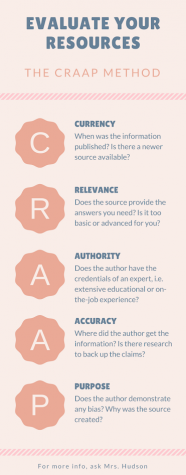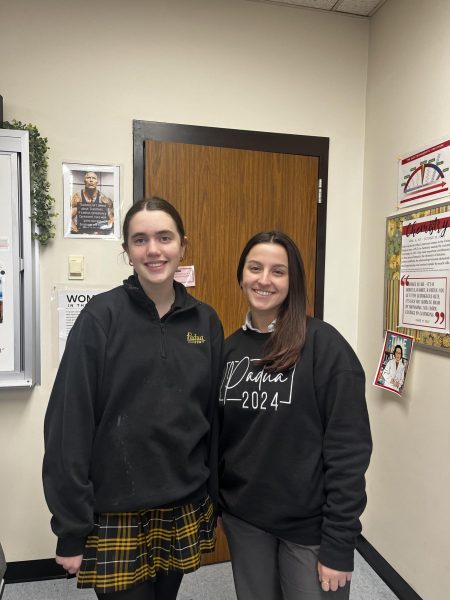Fake News And the 2020 Presidential Election

With a rise in the use of social engineering on social media, politics and entire governments can be swayed to believe fake news.
With a rise in the use of social engineering on social media, politics and entire governments can be swayed to believe fake news. Social engineering is the act of using deception to manipulate individuals into divulging confidential or personal information that may be used for fraudulent purposes. Frank Abagnale Jr. is a social engineering pioneer that completely reshaped the way our government’s banks, airports, and other organizations look at security.
“When I did it 50 years ago, the only tool I had was a telephone because that was all that existed,” said Abagnale. “So I convinced someone at Pan American Airlines by telling them a story that I was a pilot and lost my uniform and I was on a trip and needed to replace it.”
Today, people can use the internet, emails, and social media to socially engineer people. In the 2016 election, we saw a rise of social engineering from foreign countries that reached to persuade our government. Candice Carter, a researcher for NASA, Federal Law Enforcement, and Intelligence Community along with having degrees in MS in Cybersecurity Forensics and MS Cybersecurity Intelligence, observed the use of social engineering in the past presidential elections.
“During the election of President Obama, the US first experienced new power of online communities. The new form of power became stronger with the 2016 election,” said Carter. “Other countries such as Russia seized the opportunity to use the online platform to formulate movements, turn our country against one another. This continues even today.”
The next presidential election that will take take place in 2020 is set to experience even more social engineering via social media and other platforms.
“I think foreign countries who want to control who’s the president of the United States or things that we’re voting on, are going to use social engineering, they are going to use social media to do that with,” said Abagnale. “This is why you have to educate people about knowing that they’re being socially engineered and verifying the information that they receive and the source it comes from and is it actually real and legitimate, not just to take everything you read as being the truth.”
Education about social engineering and fake news is vital to not only our opinions, but our government as a whole. Here at Padua, Mrs. Hudson teaches the students about how they can avoid being socially engineered by believing fake news.
“[New voters should] understand that even reputable organizations can have it wrong sometimes especially when it comes to breaking stories or controversial stories,” said Mrs. Hudson. “The more people that [fake news] reaches, the harder it is to spread the truth. I think that [new] generations are ready to be better evaluators than past generations.”
When teaching students, Mrs. Hudson uses the CRAAP method. C stands for currency which asks you to find the most relevant information based on the time that the information was published. R stands for relevance which asks you to make sure that the information you are reading pertains to the topic that you are trying to educate yourself on. The first A stands for authority. What is the author’s credentials to validate what they are saying? The second A stands for accuracy. What research did the author do? The last letter is P which stands for purpose. Does the author demonstrate any bias towards the topic to make the work opinionated?
Abagnale believes that fake news is unfortunately more common than it used to be and that it is harder to find more reliable information. He gets his news from the Wall Street Journal, but even then, Abagnale does even more research to verify the facts.
“I’d be very leary about getting anything on social media because I don’t know who’s controlling it,” said Abagnale. “Is Google controlling that? Is Facebook controlling that? Is somebody in a foreign country controlling that? Who has a bias one way or another and wants to convince me to think differently than I might think?”
Abagnale gives the “10 Year Challenge” as an example of social engineering being used, but not being identified as so.
“Actually, Facebook did that because I’m going to sell that data to insurance companies,” said Abagnale. “So the insurance companies say, ‘Well, Frank Abagnale doesn’t look very good. He looks like he lost some weight, he’s thinning in the face. Maybe Frank’s been sick. We need to look at Frank’s insurance.’ Maybe it’s some younger person where they say, ‘Well we could sell this person cosmetics or hair dye.’”
Abagnale urges people to check their politics news sources before they believe information because it can be detrimental to their government and ultimately to themselves.
“There’s always a reason behind everything they do because they are trying to ultimately take control and sell you something,” said Abagnale. “I think we are all going to become aware of that and that’s why I always say that, I hope that one day while I’m alive it happens, but at some point we are all going to look back and say this was not a good experiment, social media. That was why we were allowed to corrupt a lot of people’s minds was through social media.”


Devon is a freshman at Padua. She wants to do something with writing in her future, and she is excited to be taking this journalism course to hone her...




